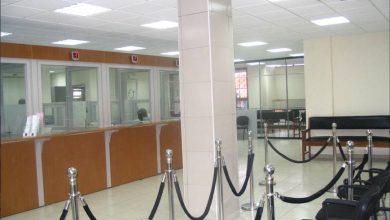Revisiting levies in fuel pump prices
Presence of levies in the petroleum pump price build-up has always been a contentious issue in the country. This is largely because of concerns of lack of transparency and accountability in the management of some levies alongside perceptions that they unnecessarily push up fuel prices.
But truth be told, the levies are here to stay and, if anything, more are bound to be introduced to raise money for financing of various causes. Many countries use fuel levies to raise funds for specific activities, as such, what is required is to strike a balance by ensuring that the levies do not significantly influence the upward rise in the pump price.
Thus, to relieve consumers the burden, what authorities can do is to modify the rates of each levy.
There are currently almost 10 levies in the fuel price build up which at my last count collectively totaled about K331 per litre of diesel or petrol.
Every time consumers pay for fuel at the pump, they contribute to the Rural Electrification Levy, Road Levy, Malawi Bureau of Standards (MBS) Cess Levy, Financing Charges Levy, Energy Regulatory Levy and In-Bond Landed Cost (IBLC) Loss Recovery Levy and the Price Stabilisation Fund (PSF). The other levies are Strategic Fuel Reserves or storage at K10 per litre, Distribution Fund worth K4 per litre and Carbon Tax levied at K5 per litre.
The IBLC Loss Recovery Levy of K72.35 per litre and the Finance Charges Levy were added to the price build-up last year.
Malawi Energy Regulatory Authority (Mera) is the collector of the various levies.
In my earlier article on the levies some time last year, I expressed reservations with some of the levies, including the Energy Regulatory one which was pegged at K19 per litre, out of which K4 per litre financed the newly opened imposing Mera House at City Centre in Lilongwe. Reacting to the concerns, insiders confided that the K4 was to fall off because the building was almost complete. But my prayer was for it to fall from K19 to K10, not just by K4.
The K3 per litre MBS Cess Levy finances quality monitoring and development of standards. My take has been that by now, MBS should have been weaned off the price build-up because it already charges for its services. However, it remains in the build-up and, apparently, it appears the K3 per litre is what is sustaining the bureau as it accounts for almost 60 percent of the budget for running MBS. Perhaps with the new laboratory and office complex will lift up MBS to stand on its own financially and only charge consultancy fees for fuel testing and the like, not a consumer-funded levy.
By mid last year, the Rural Electrification Levy had collected in excess of K100 billion for the Malawi Rural Electrification Programme (Marep). The funds have lied idle due to controversies in the award of contracts.
The tricky part with the Rural Electrification Levy is in the Energy Act, as such, revising it would require endorsement or approval by members of Parliament, a tall order considering the sensitivities and politics attached to the programme.
On the other hand, IBLC Loss Recovery Levy was meant to collect funds which the PSF failed to collect to meet the shortfall between the global oil prices and the Mera-regulated landed cost which has often been on the lower side. I must say that in the circumstances, where the country is low on foreign exchange and the prevailing pump prices are not “cost-reflective”, as it were, this new levy was a necessary evil to avoid a crush. I understand it is a temporary one.
Financing Charges Levy, another new addition last year, is said to cater for the disparity in the foreign exchange rates between the official rate and the higher rate importers are being offered amid the crisis.
The Road Levy, at an average of K140 per litre of diesel and petrol, is probably the biggest levy. But it is important because this country needs heavy investment in road infrastructure. Surely, the road users would love to drive on better roads funded by this levy.
From the outline, it is clear that almost each levy has a function to serve. However, at the same time, the rates can be revised downwards in some cases.
Transparency is also critical in the collection and management of the levies. In my last piece on the issue, I suggested the need for Mera to be publishing the collections either monthly or quarterly for the public to follow and track. I feel such an arrangement would enhance transparency and accountability.


